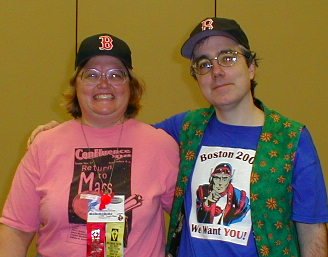Programming the Universe by Seth Lloyd
Now image that a bit represents an instruction for a computer (in a real computer, it’s a byte or bytes, but the argument is still basically the same). Say 0 means “add 1 and 3” and 1 means “add 2 and 2.” A standard digital computer can do one or the other, depending upon whether that bit is 0 or 1. What does a quantum computer, using qubits instead of bits do? Both at once. Thus, a quantum computer – made up of even a relatively modest number of qubits – can perform an incredible number of instructions at once. To date, we’ve only managed to use up to 20 quibits, but we’ll increase this over time. The end result is that in the not to distant future (within 20 years, most likely), we’ll, for example, be able to factor very large numbers. Those who know cryptography know that this means that our current secure encryption schemes can then be cracked.
But this is only a starting point for exploring quantum computing. Seth Lloyd does a great job of looking at the many aspects of quantum computation in Programming the Universe. He starts with information theory, exploring how the second law of thermodynamics (that entropy increases) can also be viewed as involving information theory – entropy is really the hidden information of the system. On the most fundamental level, the universe is processing information. Moreover, as information shows, a quantum computer the size of the universe would be able to simulate the universe: the universe and a quantum computer are thus interchangeable, and the universe can be viewed as a quantum computer.
When this is first stated the typical reaction is “what does this mean, and what do we gain in our understanding by looking at things this way?” That was certainly my reaction. But this paradigm can yield some interesting breakthroughs in understanding. For example, quantum computing points toward a possible theory of quantum gravity – one that may do a better job of addressing this most fundamental problem of physics than string theory does (though we’re not there yet). Information theory and quantum computing also manages to address another very basic question: why is the universe we see around us so complex?
The universe at the time of the big bang was very simple. There were no complex structures. How did complexity come about? (I won’t try to define “complexity” here, though Lloyd addresses this in his book.) Some have used the “monkeys trying to type Shakespeare” analogy: a million monkeys, typing for long enough, will produce Shakespeare’s plays. But, as Lloyd points out, this doesn’t work. Even if a monkey typed the first act of Hamlet, chances are the next letter it types won’t be the first letter of act two. In a classical world, chances are that things will stay random. But, Lloyd note, information theory and the view of the universe as a computational machine addresses that. Picture instead the monkeys typing into a computer. What’s the chance that they will type the first ten million digits of pi? Very, very slim. But, what’s the chance they will type a simple computer program to generate pi. The program (pick your computer language) is much shorter than ten million characters. So the chance of the monkeys producing complexity (pi, e, fractals, etc.) in a computational universe is much greater than their doing so in where computation doesn’t happen. It’s a fascinating way to view the evolution of the universe.
This is a very good book – both well written and mind bending. It’s one of those science books that alters the way you look at and think about the universe. While I’ve read quite a few physics books over the years, this was my first on the topic of quantum computing, and it’s given me a new perspective –on what we might accomplish in computer science in the coming decades and, more importantly, on how the universe works. And I’m also ready to back and re-read several Greg Egan novels.

